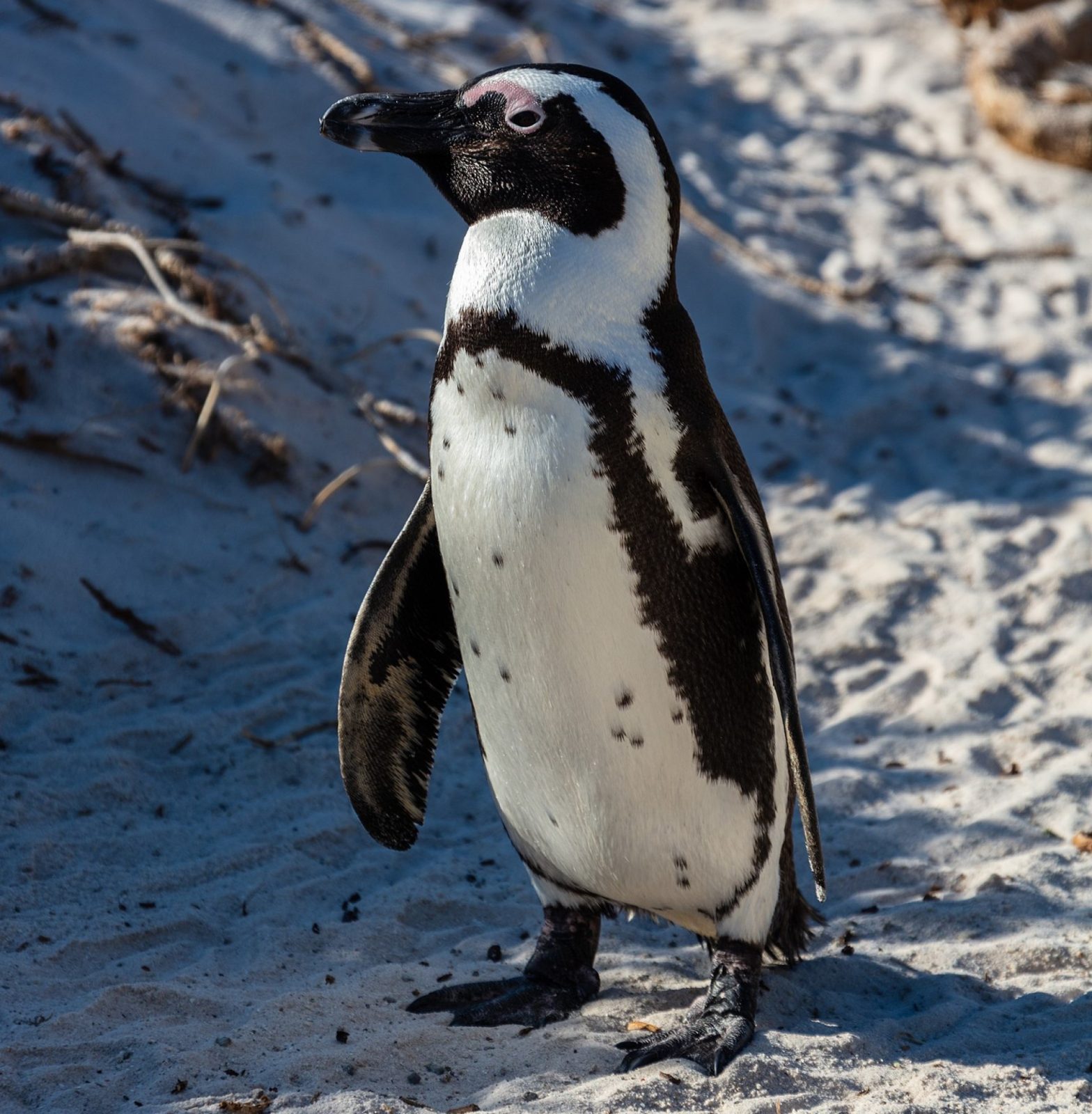
African Penguin
Also known as the Cape penguin or South African penguin,  its range is shown on the image to the right. Growing to 60-70cm and 2.2-3.5kg, the black strip and spots on their chest is unique to each individual (like a fingerprint), which is useful, as provided you have a good image of this part of a penguins body, you can identify which you are looking at.
its range is shown on the image to the right. Growing to 60-70cm and 2.2-3.5kg, the black strip and spots on their chest is unique to each individual (like a fingerprint), which is useful, as provided you have a good image of this part of a penguins body, you can identify which you are looking at.
The pink area above the eyes, are where the sweat glands lie, and when hot, this area gets redder, as blood is pumped here to cool down. They have slight sexual dimorphism, with males being larger and with longer beaks. As with other penguin species, having light front side, and dark back, they blend in to the background, when predators look at them from above or below in the water. They are nicknamed as the Jackass penguin, due to the loud noise they make.
The only other mainland colony is in Namibia, with a colony of around 5000 breeding pairs. This is more remote, and videos have been filmed of these penguins being predated by brown hyenas, and also at times cape leopards.
They live in 24 colonies along the coast. In the 1980s, two breeding colonies were established, close to Cape town, and is thought that these were only established in recent times, as a result of reductions in the number of natural predators as a result of humans. The Betty bays colony has been attacked by leopards in recent years, and while there are not that many of these Leopards left, they are hanging on. In Namibia, other species also take these and various seals, from the beach.
At the beginning of the 19th century, the African penguin population was roughly 4 million individuals, but unfortunately populations have crashed in the years since to 10% of that figure remained at the end of the 20th century. There has been a 95% decline in Namibia and South Africa, since pre-industrial times. Given current declines, there has been a prediction that the African penguin will be gone by 2026. Thankfully, it appears that this is incorrect, but we will have to wait and see what happens. They are monogamous, and reconnect each year, the eggs take around 40 days to hatch and brooding is shared by both genders. They fledge at 60-130 days depending on conditions, when they take to the sea, and do not return for 2 years. Females can continue to breed for 10 years. Threats in the past, have included thousands of eggs being collected for human consumption, though this thankfully has largely stopped. Oil spills are terrible for these penguins, and many die each time there is a spill in this penguins range. A variety of groups are working on trying to save this species, through a variety of methods. Whether this can stave off extinction is anyone’s guess.
They feed in the open sea, eating a variety of small fish, krill and crustations. They have to consume around 540g a day to remain healthy (this increases to 1kg when raising young). Standard dives are to 25m and for a little over a minute, though these dives can reach almost 5 minutes and 130m in depth. Sharks and fur seals are both dangerous predators at sea, and eat significant numbers of these penguins.
They are easy to keep in zoos, with the ability to cope with relatively high temperatures, and zoos around the world spend significant amounts of money on conservation of this species in the wild.
Below, you will find a list of any articles about this species, and below it, is a video of one of the South African colonies in boulders beach (within Table mountain national park). Below both, we will have a list of opportunities to see these species (we hope over time to make many links, do get in touch, we would love to help people find you)










